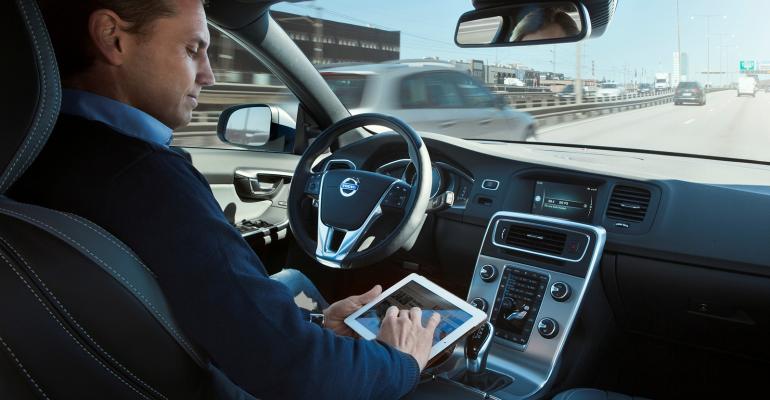Volvo Cars calls for a new, global standard in how autonomous vehicles safely can communicate with all other road users as it introduces its 360c autonomous concept.
It says autonomous technology will be introduced gradually rather than overnight, and fully autonomous cars will operate in mixed traffic where cars without a human driver will share the road with other road users.
In such a traffic situation, it will no longer be possible to make eye contact with and learn about another driver’s intentions.
As part of the development of its 360c autonomous concept, Volvo Cars’ safety engineers studied how to establish a safe means of communication between fully autonomous cars and other road users.
The focus was to create a universal standard so other road users need not consider the make or brand of individual autonomous cars.
The 360c addresses this challenge with a system made up of external sounds, colors, visuals and movements, as well as combinations of these, to communicate the vehicle’s intentions to other road users. This means it is always clear what the car will do next.
Malin Ekholm, vice president-Volvo Cars Safety Center, says while the design of the 360c safety-communication technology focuses on making the car indicate its own intentions, it will never issue directions or instructions to other road users.
“We strongly believe this communication method should be a universal standard, so all road users can communicate easily with any autonomous car, regardless of which maker built it,” Ekholm says in a statement.
“But it is also important that we do not instruct others what to do next, in order to avoid potential confusion. Our research shows this is the safest way for fully autonomous cars to communicate with other road users.”
The 360c represents Volvo Cars’ vision for a future of travel that is autonomous, electric, connected and safe – and which may allow the automaker to enter new growth markets.
It presents four potential uses of autonomous technology – a sleeping environment, mobile office, living room and entertainment space – all of which reimagine the way people travel.
Volvo wants consumers to imagine a world in which they travel long distances without the need for airports, airport security, hours of queuing and waiting, and noisy, cramped airliners.
Its vision is to replace all that with a consumer’s own first-class private cabin that goes from door to door. Its idea for the future of autonomous travel is on display with its 360c concept.
Robin Page, senior vice president-design, says autonomous-vehicle concepts tend to become a technology showcase instead of a vision of how people use it.
“But Volvo is a human-centric brand,” he says. “We focus on the daily lives of our customers and how we can make them better. The 360c is the next iteration of this approach.”





